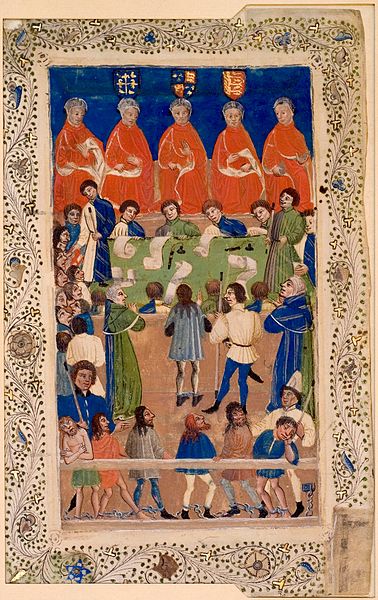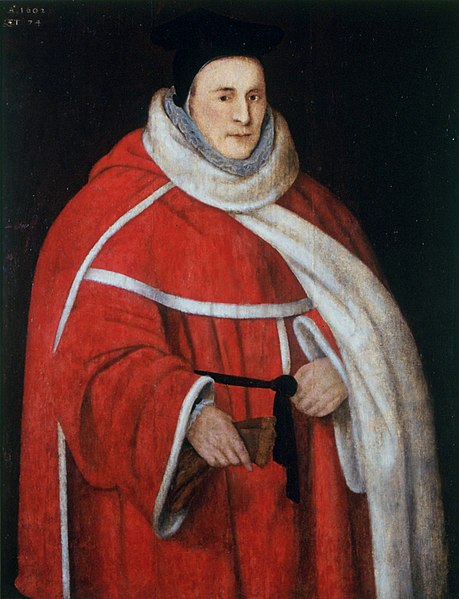Justice of the King's Bench
Justice of the King's Bench, or Justice of the Queen's Bench during the reign of a female monarch, was a puisne judicial position within the Court of King's Bench, under the Chief Justice. The King's Bench was a court of common law which modern academics argue was founded independently in 1234, having previously been part of the curia regis. The court became a key part of the Westminster courts, along with the Exchequer of Pleas and the Court of Common Pleas ; the latter was deliberately stripped of its jurisdiction by the King's Bench and Exchequer, through the Bill of Middlesex and Writ of Quominus respectively. As a result, the courts jockeyed for power. In 1828 Henry Brougham, a Member of Parliament, complained in Parliament that as long as there were three courts unevenness was inevitable, saying that "It is not in the power of the courts, even if all were monopolies and other restrictions done away, to distribute business equally, as long as suitors are left free to choose their own tribunal", and that there would always be a favourite court, which would therefore attract the best lawyers and judges and entrench its position. The outcome was the Supreme Court of Judicature Act 1873, under which all the central courts were made part of a single Supreme Court of Judicature. Eventually the government created a High Court of Justice under Lord Coleridge by an Order in Council of 16 December 1880. At this point, the King's Bench formally ceased to exist.

The Justices of the King's Bench at work. This illuminated manuscript from about 1460 is the earliest known depiction of the English court.
Court of King's Bench (England)
The Court of King's Bench, formally known as The Court of the King Before the King Himself, was a court of common law in the English legal system. Created in the late 12th to early 13th century from the curia regis, the King's Bench initially followed the monarch on his travels. The King's Bench finally joined the Court of Common Pleas and Exchequer of Pleas in Westminster Hall in 1318, making its last travels in 1421. The King's Bench was merged into the High Court of Justice by the Supreme Court of Judicature Act 1873, after which point the King's Bench was a division within the High Court. The King's Bench was staffed by one Chief Justice and usually three Puisne Justices.
The Court of King's Bench at work. This illuminated manuscript from about 1460 is the earliest known depiction of the English court.
Westminster Hall, where the King's Bench sat until its abolition
The Court of Chancery, a competitor to the King's Bench and other common law courts during the 15th and 16th centuries
John Popham, the Chief Justice of the King's Bench who brought the Common Pleas and King's Bench into conflict over assumpsit




